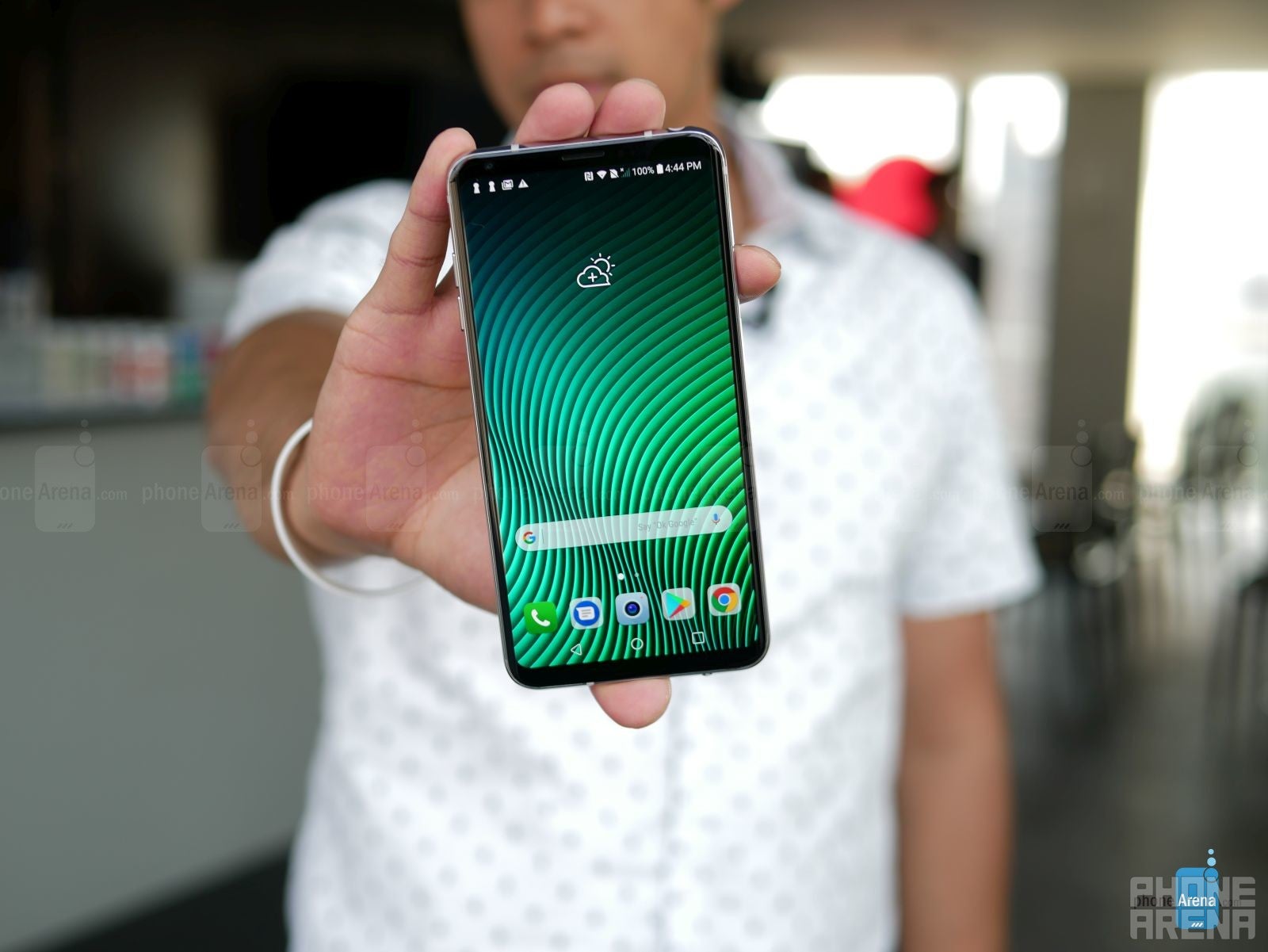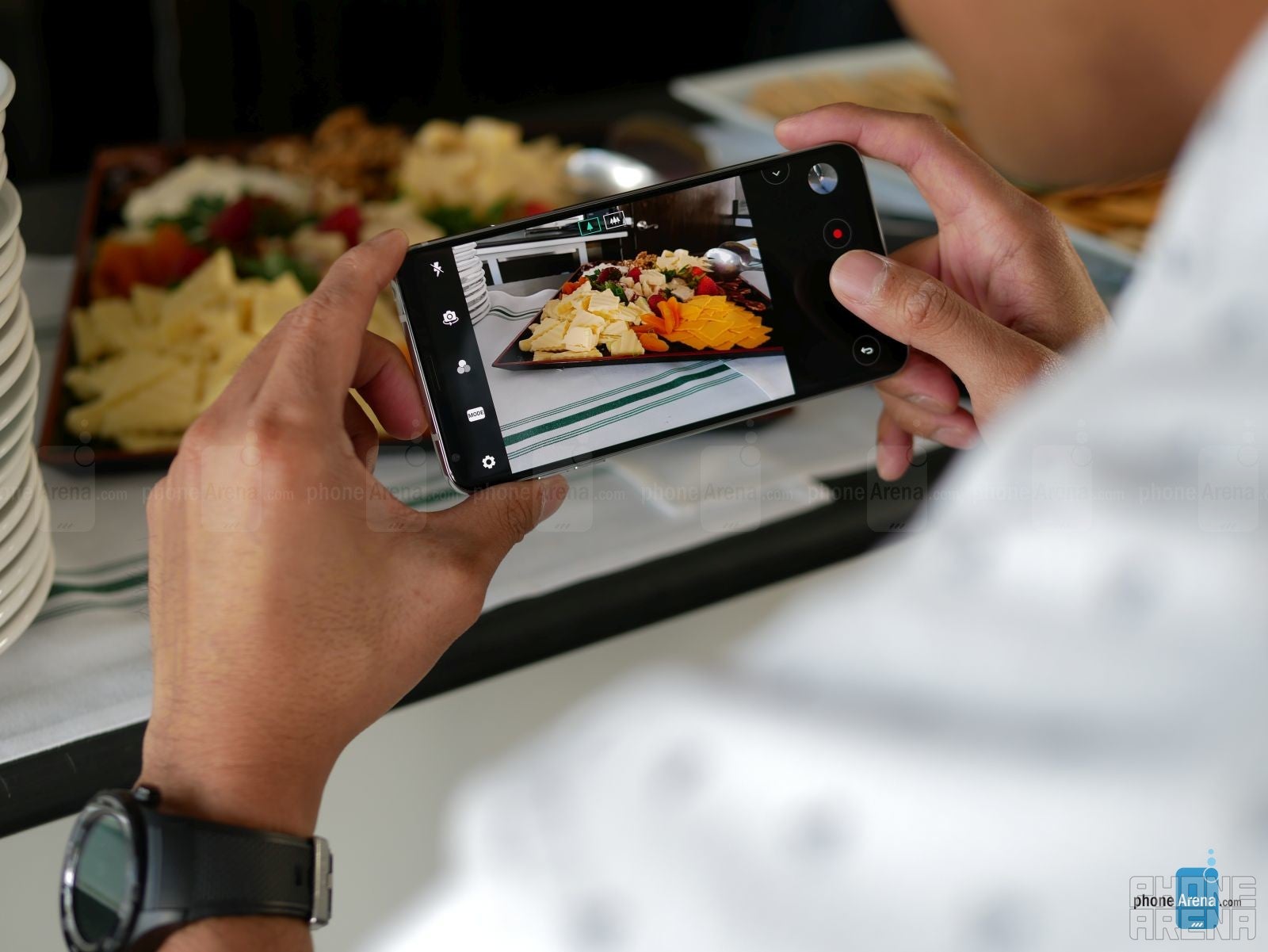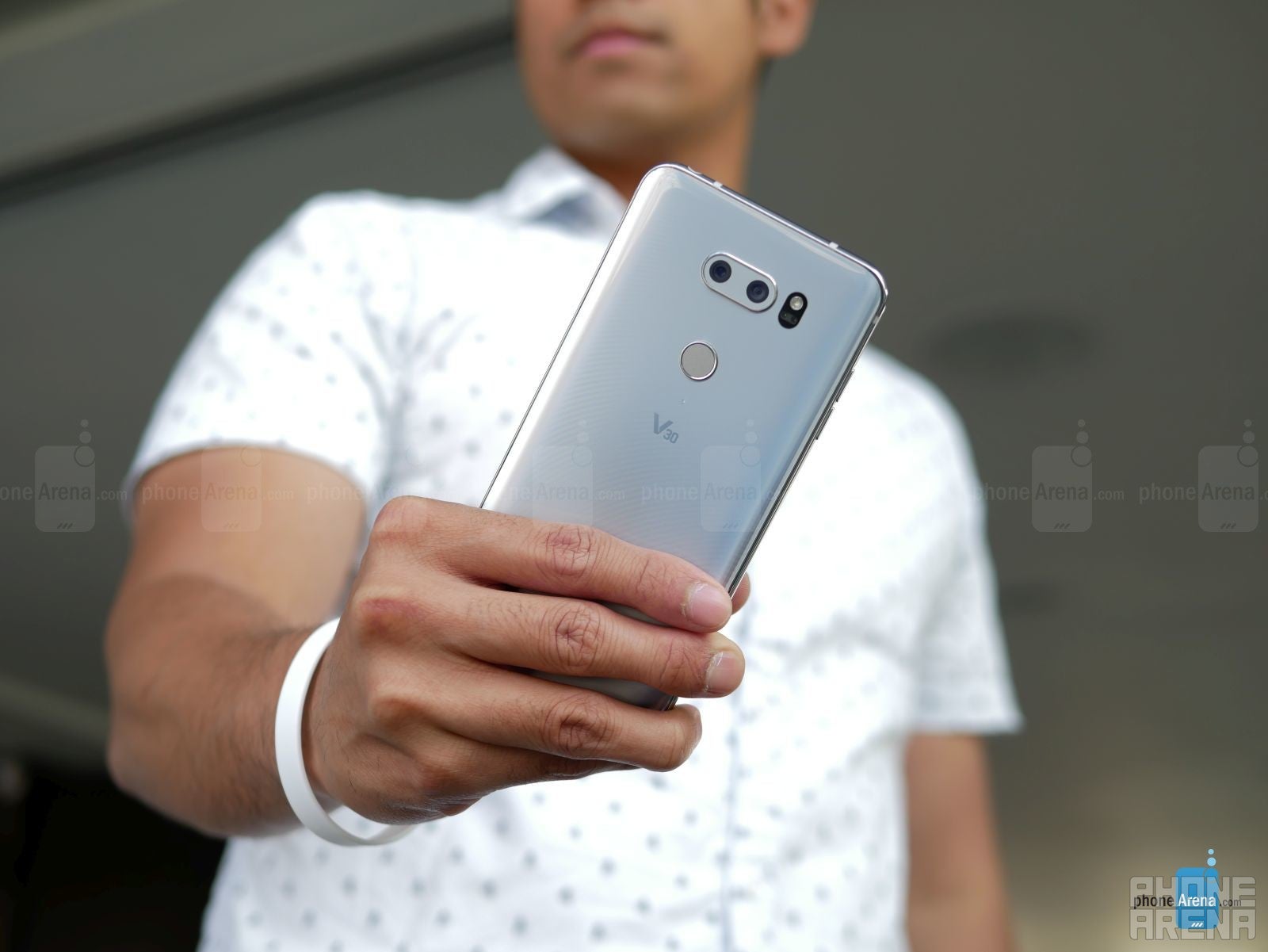LG V30 hands-on: finally, a true Galaxy S8+ rival!

LG has gained significant ground against its rivals after the LG G6 launched earlier in the year. Considering that last year's G5 stumbled and failed to live up to expectations, its successor in the G6 is allowing LG to gain some leverage as they continue to remain relevant in this always unpredictable industry. Now that we're nearing the fall, all eyes are on the LG V30, which like its predecessors in the past have been unofficially proclaimed as flagships for the second half of the year.
Design
Stunning! Even though the G6 steered LG's design language to a new direction, one that was seen as a favorable move by critics, the V30 does better with its iterative refinements. Continuing with the same design language featured in the G6, a glass meets metal construction, the V30 benefits from having a slimmer chassis and sloping edges that that make this one far more comfortable to hold in the hand – whereas with the G6, it looked a bit 'flat' and felt sharp around the edges.
Just as before, the fingerprint sensor is positioned on the back of the phone. It's conveniently accessed and doesn't get in the way of the camera lenses, but on top of that, the V30 will now offer a few more ways of securing/unlocking the phone. There's now going to be a new facial recognition security, as well as a voice recognition one. We demoed the latter, which unlocks the phone by speaking the key phrase that the phone is trained to recognize. Unfortunately, we didn't get a chance to check out the face unlock, so we're eager to see how it differs from Samsung's interpretation.
Display
What's impressive here is that LG crammed in a larger display into the V30 without increasing the phone's dimensions over its predecessor in last year's V20. The end result, of course, is a much-improved screen-to-body ratio of nearly 82% with its new 6-inch Quad-HD+ (2880 x 1440) FullVision Display – up from last year's 5.7-incher in the V20. Following the G6's near bezel-less nature, the V30's screen complements the phone's new styling.

User Interface
We didn't spend a whole lot of time checking out the interface, which is running Android 7.1.2 Nougat. It's a clean interface for the most part, much like what was found in the G6. While navigating around won't be an issue for anyone familiar with the vanilla screen, it's worth mentioning that there's still no dedicated apps panel that we can see – so everything is positioned on the home screen. Given that Google has fine-tuned its mobile platform, there's very little in the way of minor customizations thrown in by the manufacturer, which is the case here with the V30. We will mention, though, that if you miss the old secondary screen in the V20 and V10, LG has transformed into a floating bar that can be accessed through the interface.
In the short time checking out the phone, it managed to exhibit the speedy responsiveness you'd expect in a high-end device. Unlike the G6, though, the V30 is a true powerhouse because it's pack with some of the latest cutting-edge hardware. For example, it's powered by the Qualcomm Snapdragon 835, something that many people were hoping to see in the G6. Adding to the hardware arsenal, the V30 is packaged with 4GB of RAM, 64/128GB of internal storage, and a microSD card for expansion.
Camera
Staying the course in being more of a video-centric thing than anything else, the V30 features the same dual-camera system as before – in the way that its duo delivers a wider field of view, as opposed to the zoom/bokeh mode that other dual-cameras offer. This time it breaks down to a main 16-megapixel main camera with a glass f/1.6 lens and a 13-megapixel wide-angle camera with an f/1.9 aperture. With this new combination, it's expected to deliver even better low-light performance – while minimizing the distortion with the wide-angle shots.
We checked it out on the action and we have to say that there's not a whole lot of distortion around the corners when you switch to the wide-angle mode. On top of that, LG is entering a new domain by now offering these new color grading "cine effects." These 15 different cine effects enrich the color of the images to achieve a more cinematic look, much like what you'll find in some DSLR/mirrorless cameras that offer different color modes. For any serious content creator, it'll allow them to better compose footage – so if it's a scene that evokes happiness, one of the cine effects produces a warmer color tone.

Moreover, the V30's video prowess extends to the audio recording side as well, since it packs along 2 high performing mics and receiver to record lossless audio without distortion. And finally, LG now bundles in native video editing tools to allow you to not only shoot content, but to edit them as well on the go. So in theory, you can produce cinematic grade videos by just using the phone and nothing else!
This is all promising and we're quite excited by the V30's potential, but we'll reserve judgment until we actually see the final product.
Battery
Thankfully, even with the smaller overall size of the V30 over its predecessor, they've managed to stuff it with a marginally larger 3300 mAh battery. Indeed, it'll be interesting to uncover its longevity now that it's dealing with a larger screen, but we're sure that the optimizations in the software, processor, and screen itself should permit the V30 to reach higher battery levels than before. And finally, there's still wireless charging enabled with this one.
Expectations

While everyone else is continuing to attack the portrait/bokeh mode with their cameras, the LG V30 goes in a totally different direction by focusing more on having a wide field of view. From what we've seen so far in our brief hands-on time, the V30 is shaping to be a phone for content creators. And when it comes to video, there's no other phone on the market that can compete with its features set, abilities, and extensive tools. In fact, this is one of the few phones to offer full manual video controls, color grading options, and baked-in video editing tools!
Speaking of money, its exact pricing has yet to be revealed, but it's a safe bet that it'll be around the same territory as the Note 8 – albeit, it'll probably cheaper by just a little bit. Hey, that's not too shabby when you factor the tremendous overall that LG has done with the phone. If there's one phone to be on the lookout this fall, the LG V30 is undeniably one of them!
Follow us on Google News









![A new Android bug is making it impossible to install new apps. Are you affected? [UPDATE]](https://m-cdn.phonearena.com/images/article/176703-wide-two_350/A-new-Android-bug-is-making-it-impossible-to-install-new-apps.-Are-you-affected-UPDATE.webp)

Things that are NOT allowed:
To help keep our community safe and free from spam, we apply temporary limits to newly created accounts: